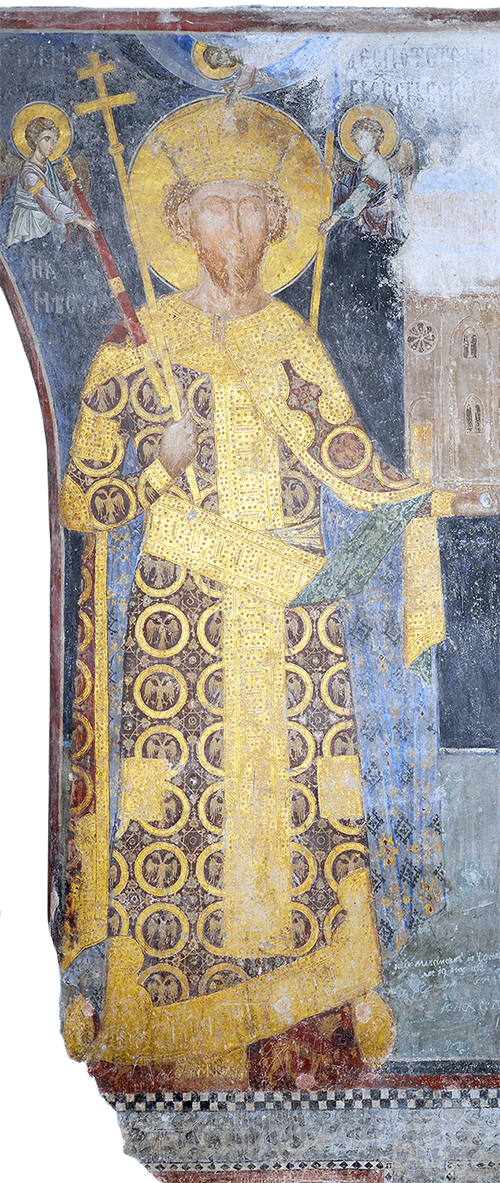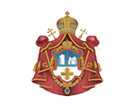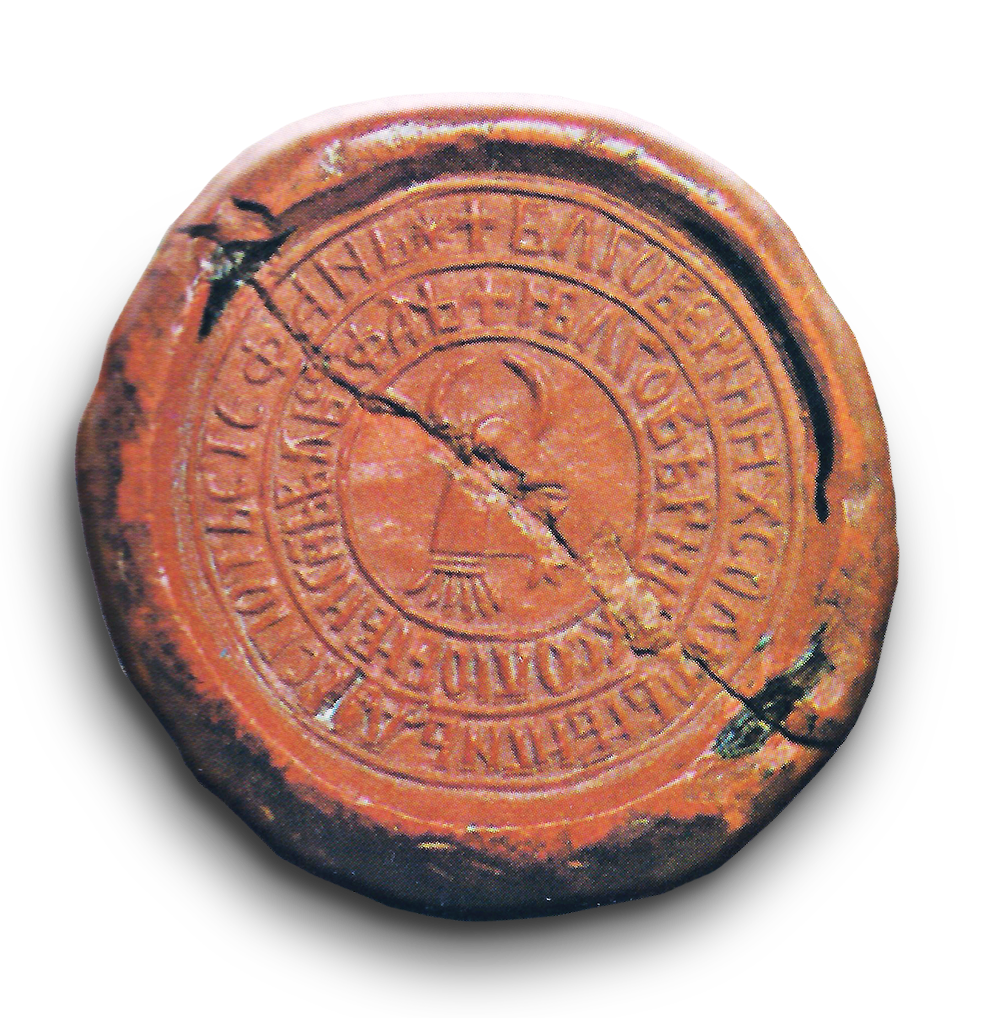-

-
Stefan Lazarević (1377-1427) is the elder son of Serbian Prince Lazar and Princess Milica. After the battle of Kosovo (1389), in which Stefanʼs father, Prince Lazar was killed, Stefan came to power when he was only twelve, and with the help of his mother ruled until he came of age (1393). As an Ottoman vassal, he successfully led the Serbian knights in the battles of Rovine, Nicopolis and Ankara. After the battle of Ankara, he was awarded the title of Despot in Constantinople by the Byzantine emperor Manuel II Palaiologos (1402). In early 1404 he became an ally of the Hungarian king Sigismund, who presented him with Mačva and Belgrade. Stefan turned Belgrade into his new capital. After the great defeat of the Turks at Ankara where Despot Stefan showed great courage admired even by the enemy, a civil war broke in the Ottoman empire and even conflicts among the Serbian nobility were stirred, initially between the houses of Lazarević and Branković s, and subsequently between Stefan himself and his brother Vuk. Namely, at the battle that took place in Kosovo in 1402 the Lazarević brothers confronted the attack by Đurađ Branković and Turks; the Lazarević brothers split their army in two. Vuk led a larger unit, but suffered defeat, while Stefan won the battle. That ignited initial conflicts between the brothers.
Social circumstances at the time were laden with dynastic conflicts, treason, wars and unprecedented Turkish atrocities. There has not been a more complex age and deeper abyss in the history of the Serbian nation. The bleak times during the rule of Despot Stefan in comparison with idyllic epoch of the Nemanjić dynasty were reflected in the Serbian society, as if it had been faced with the challenge of the end time. The fear of approaching darkness that permeated the Serbian society did not reduce his responsibility, and eventually, at the end of the historical path of the Serbian state, relying on his faith and knowledge he had to serve the people entrusted to him, the best he could.
Despot Stefan Lazarević was a great patron of art and culture providing support and shelter to scholars from Serbia and exiles from surrounding countries occupied by the Ottomans. He was educated at his parents’ home, he spoke and wrote Serbo-Slavic; he could speak Greek, and was familiar with Latin.
He was an author in his own right, and his main works include „Slovo ljubve” (Letter of Love) that he dedicated to his brother Vuk and „Natpis na mramornom stubu na Kosovu” (Inscription on the Marble Pillar at Kosovo). Some of the original works he wrote during his reign have been preserved. During the Despotʼs reign, rich transcribing activity – The Transcription School of Resava – was developed in his foundation, the Manasija Monastery. More Christian works and capital works of ancient civilization were transcribed there than in all times preceding the Despotʼs ruling. By building a spiritual shield to his nation, bequeathing rich spiritual heritage and values rooted in Christian civilization, Despot Stefan made it possible for future civilizations to find own spiritual roots, deeply aware that historical recollection cannot exist without linguistic memory.
He was a personality whose name is inscribed in gold letters in the history of the Serbian nation. Immensely pragmatic, wise, able statesman, excellent diplomat, brave and successful military leader, broadly educated, remarkable poet, enlightener, Despot Stefan is almost an unreal mixture of knightly bravery, magnificent intelligence, rich education and outstanding spiritual and physical beauty. Therefore, it is no wonder that in his lifetime he was awarded the title of the First Knight of the Order of the Dragon. He was obsessed by the idea that guided him: to make words sacred and world more humane. All modern substitutes to the knightly view of the world and moral principles that he served stay inferior before the life work of Stefan Lazarević dedicated to substantiation and confirmation of these principles.
-
The Life of Despot Stefan Lazarević had a very rich and interesting fate on the Russian soil during the 15th and 16th centuries. The work had its Russian edition as early as the 15th century, meaning that it was translated into Russian very soon after the original was published. Finally, it served the compilers of the Russian Chronograph as the basis for description of events in Turkey after the defeat at Ankara in which Despot Stefan actively participated. The Russian Chronograph was compiled in the late 15th century, and became so popular that it was transcribed in Serbia in the 16th century, so that descriptions from the Serbian history were taken over from the Russian adaptation.
-
The peak of the Russian efforts to keep the records and compile all documents relating to the history of the world, particularly in the visual sense, was reached by the Illustrated Chronicle (literally “Face Chronicle”) with hand painted miniatures. It was commissioned by Ivan the Terrible and compiled between 1556 and 1585. The huge enterprise was adorned with about 16,000 painted miniatures; summarized parts of the Serbian history were also included according to the contemporary literary works.
In addition to the life of St. Sava of Serbs, miniatures on the battle of Kosovo and the life story of Stefan Dečanski, there were also some illustrations of the life of Despot Stefan Lazarević.


